Assassin's Creed Valhalla's settlement explored: your new Viking home
Loot and village.
It's been years since Assassin's Creed gave its heroes a home. For all the hours I spent as Kassandra, her brief stab at a quiet life left an odd taste, and there was nothing cosy about the cold stones of Atlantis. Valhalla's village settlement, however, offers something very different. For new heroine Eivor, it's a growing community of houses and people, shops and services, friends, families, lovers. It is a base for the game's Ancient Britain-set campaign, a hub for travel to distant shores, a graveyard to bury the dead. And while its walls may be built from the same stones as BioWare's Skyhold, it lies on earlier foundations set down by Connor's Homestead and Ezio's beloved Monteriggioni.
"It's really tricky to show the settlement as it's the core of the game," David Bolle tells me. He's a level designer at Ubisoft Montreal, and has worked on Eivor's Ravensthorpe from the project's start. "It is the centrepiece - everything folds back into here, including a lot of narrative and big story turning points." Over the course of an hour-long presentation, I don't see these story spoilers. But I do get to watch Ravensthorpe grow in fast-forward, as Bolle zips through its evolution, tents turning into timber frame buildings, a cluster of houses in a forest clearing into a bustling little community.
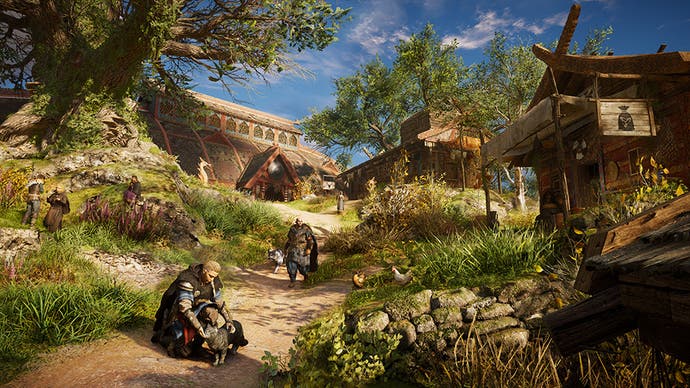
When Eivor first arrives, Ravensthorpe is little more than a Saxon longhouse and a couple of tumbledown shacks. Tents lie scattered, and from these you can choose which buildings to begin adding. One of this first selection will be the blacksmith, who will upgrade weapons in a similar manner to those found in Odyssey - though this service will now be found exclusively here. Your longhouse, meanwhile, becomes a base of operations for yourself and Randvi, whom Bolle describes as the settlement's de facto leader. She is the wife of Eivor's brother Sigurd (whose role takes him elsewhere), and can usually be found next to the game's large campaign map - think Dragon Age Inquisition's War Table. (Valhalla's map covers the eastern half of England, from Northumberland down to the Isle of Wight.) There's a room for Eivor to one side of the longhouse, a bed to heal up in, and a box where you'll receive letters.
Constructing further buildings, and unlocking their services, requires resources you'll find across Valhalla's world - most notably via raiding up and down the rivers of Britain. The various wood and material currencies can be swiped from the chests of abbeys, or the underground vaults of church buildings, and then invested back into your own settlement. The suggestion was you could also get these from forming alliances and from elsewhere in the game's open world. After being built, you not only get that building and its services, but the stories and missions involving that particular villager, letting you befriend and potentially romance them.
Other early buildings include the stable and aviary, where a Saxon named Rowan will sell mounts (it looks like you won't have a dedicated horse) and customise your faithful raven with paint jobs (because of course). You can also train your mounts, and swap resources for unlocked stat boosts which all horses will benefit from. These include added health (so you can make leaps from greater heights), added endurance (as galloping now saps a stamina bar) and swimming lessons (effectively turning your horse into a four-legged boat). Alternatively, you might want to invest in the Trading Post, for purchasing new resources and cosmetics (seriously, there are a lot of tattoo designs in this game), or the Barracks, which lets you design and outfit your own Jomsvikingr lieutenant. You can customise their appearance, dress and arm them with any gear you've unlocked, and even share them with friends, so they can add them to their raiding longships as well. Outside, a chap named Mundi plays Orlog, a dice game which looks a bit like Yahtzee.
Lastly, there's the Hidden Ones bureau, which will be of particular interest to long-term Assassin's Creed fans. This office is staffed by a proto-Assassin named Hytham (yes, really) who looks after a sprawling board of targets filled with tiers of mysterious figures who need a good stabbing. Eivor and the Hidden Ones are described as having a common enemy which has "dug itself into England" - the returning proto-Templars, known as the Order of Ancients. As in Odyssey, there appears to be an overall boss you'll slowly uncover and work your way up to facing.
And that's level one of your settlement. There are six levels in total.
Later levels let you unlock a Hunter's Hut, where you can exchange animal parts and turn legendary hides into trophies for your longhouse, a Fishing Hut, where you can acquire a rod and start catching aquatic animals (of course, different areas have different species), a tattooist (with tattooed pig wandering outside), a shipyard, a brewery, a bakery, a cartographer, a museum, a Seer's hut, a graveyard, individual houses for a number of key characters and a couple of farms. There are statue areas you can customise. And there are wandering dogs and cats you can pet.
Some of these are self-explanatory, while some offer unexpected advantages. Farms, for instance, increase the amount of food you have available at feasts, which you can choose to hold in your longhouse before setting out on raiding missions. The higher level the farm (these in turn can be levelled up), the better the grub and the more of a buff your crew will get when stomping on monasteries at your side.
Shipyards offer customisation options for your longboat similar to those found in Odyssey's menus. The tattoo shop lets you place designs on different parts of your body, change hair styles and colours. Male Eivor will also be able to take advantage of beard customisation here. The cartographer, meanwhile, provides you with maps for regions you've already visited (otherwise, you're encouraged to explore these and discover activities or sidequests on your own). Your museum, meanwhile, is run by a British Roman fanatic, Octavian, who promises to repair local ruins.

One key building available a little later is the Seer's Hut, decorated by hanging strings of bones and beads and run by a woman named Valka. She brews (and spits into) a mixture which Eivor can drink to access "another time, another plane" - which seems to be how you'll access the game's mythical side similar to Odyssey's Atlantis. From the game's initial trailer, we've known that Odin will play some part in the proceedings - and Valhalla's developers have said the Norse gods will be included somehow. Here, it looks like they will be easily accessible from your settlement. Says Bolle: "It's a whole new section of the game... it's pretty big."
That's the basic setup, anyway, but it feels clear the settlement is meant to be much more than this. More than the buildings popping up as you can afford them and the layout expanding, each addition to your community will fold in new branches of Valhalla's story, and add new characters to Eivor's saga. Some of the people you meet in the game's main campaign will end up joining your settlement, sparking their own further questlines. And for the people you can romance, Ravensthorpe will be where you are reunited after your travels, and offer moments where you can go on dates. (According to Bolle, you can break up and explore other romantic options, but you won't be marrying or settling down to have kids.)
"It was really important to make it feel like you were coming home when you travel back after a journey," Bolle said. "It can be five or six hours between visits, so you want to see the people you know, find out what has been happening with them. It's like when you live somewhere else and come back to your parents' house, you want to see [your old friends]. It's a comforting feeling." Sometimes you'll be greeted with sad news, sometimes happy, Bolle continued. The settlement is meant to reflect the passing years and life's ups and downs - and also the clashing of cultures within the village.
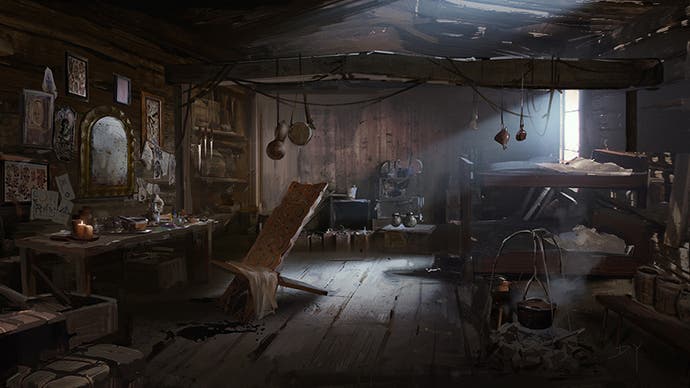

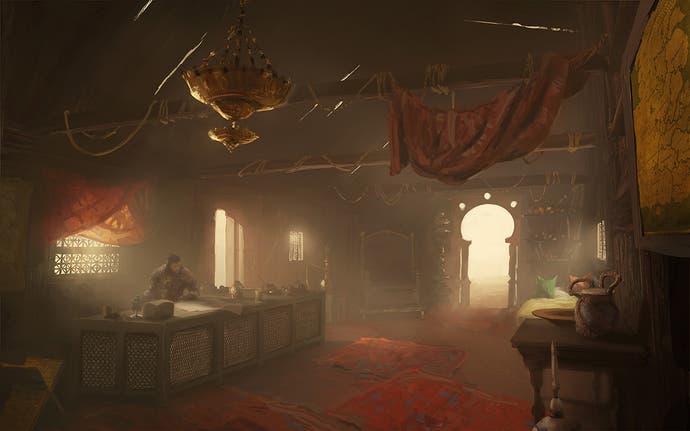
Ravensthorpe is home to Viking and Saxon characters, as well as others from the modern day Middle East and Asia. Each has their own personal histories and plot reasons for being there. Bolle showed off one example of a personality clash within the settlement in a humorous scene sparked upon a particular return to camp. He pointed out a horse wandering around without a tail, and a character having taken up painting, an easel with their work now drying in the sun. Inside the longhouse, however, the characters were arguing - the artist had lopped off the horse's tail to use as a paintbrush - and Eivor was asked to sit and make a judgment on who to side with.
From the game's announcement, Ubisoft has been keen to emphasise Valhalla's Vikings as settlers as well as invaders. As the centrepiece of the game, and even while demonstrated in fast-forward, Ravensthorpe seems to be living up to that quieter side of things. And yes, while it is another RPG trope added into Assassin's Creed, it's one which also turns the series' relatively recent reinvention back towards its roots. One of the few areas Odyssey felt lacking was in its thin recurring cast, and one of the few times it stumbled altogether was when it tried to get Kassandra to settle down. Here, in Ravensthorpe, Eivor has a family and a reason for going out to bash British heads. Here, in Ravensthorpe, Assassin's Creed has a new home.
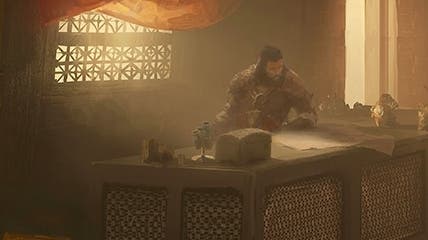


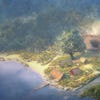




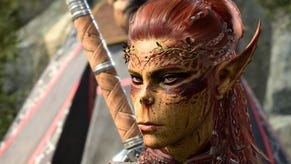


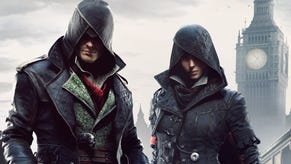
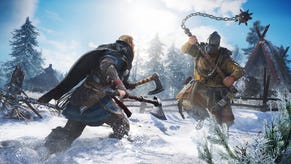


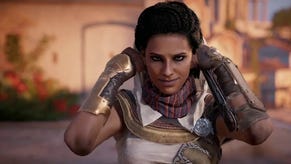

.png?width=291&height=164&fit=crop&quality=80&format=jpg&auto=webp)




.jpg?width=291&height=164&fit=crop&quality=80&format=jpg&auto=webp)
